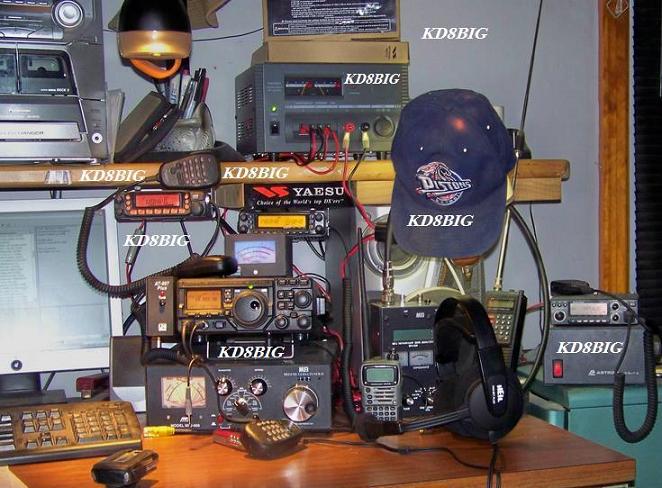I really like the Isotron Antennas.
I've used a few of them many times. They make a great field day or camping antenna and I have a few friends who use them as their base antennas at home.
I get a news letter from Isotron Antenna on a regular basis and thought I'd share the one I received today.
Enjoy.
HOW HIGH SHOULD AN ANTENNA BE?
This question is asked quite frequently. Actually what many want to know is, how low to mount the antenna to where it will still work?
There is much to learn about HF propagation. However, a few basics can help to achieve good results.
On VHF and higher you can go by the rule, "the higher the better". This is a ground wave transmission. You can liken it to line of sight. If you were to raise yourself above ground, you would see a farther distance to the horizon. So will the ground wave. On VHF, this will increase the performance in distance. Actually on VHF in particular, it is more forgiving and will bend with the terrain somewhat. This is a reason for using VHF for police and fire in rural areas. We are referring to distances of 10 to 15 miles car to car (depending on power) and as much as 100 miles through a repeater at a very high altitude.
What happens at the HF frequencies? A lot!
HF is normally used for much longer distances than the VHF ground wave. Therefore, where do you start and what factors affect it?
There is one thing to keep in mind. HF radiation rarely reflects. Due to the low frequency, there is insufficient inductance in objects to make it reflect. However, there are other factors that affect HF.
We can start with what you are walking on. The soil conditions of the earth varies per location. Conductivity and various minerals in the soil affect HF communications.
Depending on this chemistry will determine how much HF radiation will be absorbed and not leave the antenna site. What do you look for?
If the antenna is very low to the ground, you can observe the performance. Tuning of the antenna is one factor. Is the antenna reacting peculiar? Minimum SWR a bit too high? If measured, is the impedance of the antenna very low. Possibly receiving performance has deteriorated severely.
Another check is measuring SWR at low power as compared to high power. If at low power the SWR is closer to normal and high power it increases a lot, then a nearby object is most likely having an affect. Like the earth. Radiation can be absorbed and due to a transformer affect radiate some back into the antenna or possibly the feedline laying on it. This will increase the SWR and can make the antenna very narrow in bandwidth.
If this is the case, Raising the antenna even a few feet will make a change toward normal functioning of the antenna.
We can usually use the same rule as VHF,"the higher the better". However, when you are limited in what you can do, you will want to know the minimum you can get away with. HF will start performing reasonably well if you can get sufficient height from your ground absorption factor. On the average, 20 feet will do it. Some areas are more forgiving and some areas are worse. You will get indications of it by taking note of the readings mentioned.
Next article will continue on this subject.
73,
Ralph WD0EJA
FEB. 2015
ISOTRON 20
A WORK HORSE FOR 20 METERS
PHOTO WAS TAKEN 10 MILES SW OF FLORISSANT, CO.











